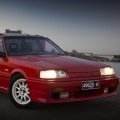Garrett GTBB Specs .
Announcements
-
Similar Content
-
Latest Posts
-
Well, no. It's an 023, which is pretty similar to an 040. Although it is hard to tell from the specs, as given.
-
Hmm. Maybe the (other thing I forgot about!) Haltech removes at least some, if not all, of the problem I described. I guess there is still the possibility of getting it wrong if the AC is set up/wired up for the Haltech as if it was in an R34 (simply because it's on a Neo), and that's playing foul with the R32 AC computer.
-
Glad it eventually came out Duncan! I believe that might be 040. 044 is the inline pump, so has screw fittings in and out. 040 is more just drop it in fuel and the bottom is "open" (mesh) from my memory
-
well mate, while I hear your pain, turns out I don't feel it this time! Must have been a bastard of a job crammed into the boot The tank was very empty (probably pumped out, not dropped and drained because there were some fumes still) and in very good condition internally. I'm sure he never ran e85 in it I don't know what the hell Nissan's fuel tank engineers were thinking about their clipping system, this hanger was really hard to get moving but came out in the end All looks very good (as I'm starting to hopefully expect) and Matty was right it is an 023 (044) bosch which should be plenty for the injectors and turbo
-
Saturday 8th February 2025 8:30am Capped 26 entries Standard Entry Fee: $89 Members Entry Fee: $55 (SAU Victoria Only) Entries Close: Thursday 6th February 8pm. Supp Regs: TBC Disclaimer: Download Please electronically sign and email to [email protected] or print and hand in and Driver Sign In. email [email protected] To compete in this event you will require A valid AASA General Speed licence or (Day license is $35.00 via the AASA Website) MA Licenses are no longer accepted by AASA https://aasa.com.au/ A helmet, long sleeve clothing and it is reccomended a 1KG mounted fire extinguisher (But not Mandatory). Further details within Supp Regs Above. You can bring and have a passenger in the car but they need to comply to the same safety and clothing as driver. Entry Link >> https://www.sauvic.com.au/entry/deca/20250208 Entry List: 1. Martin Sullivan 2. Richard Hicks 3. Warren Clark 4. Luca Stamatescu 5. Tony Buckland 6. Min Chan 7. 8. 9. 10. 11. 12. 13. 14 15. 16. 17. 18. 19. 20. 21. 22. 23. 24. 25. 26. Reserve list 1. 2.
-





Recommended Posts
Create an account or sign in to comment
You need to be a member in order to leave a comment
Create an account
Sign up for a new account in our community. It's easy!
Register a new accountSign in
Already have an account? Sign in here.
Sign In Now